 | Libby Barker, Ph.D., Mechanical, Aerospace, and Biomedical Engineering
(https://mabe.utk.edu/people/elizabeth-barker/) My research leverages interdisciplinary scientific knowledge of device design, biomaterials engineering, and polymer characterization. Students will learn how environmental factors can induce changes in living cells that can lead to the development of neoplasia and cancer. Using cell culture techniques and in vitro pharmacology experiments, students will explore how chemotherapy agents treat solid tumor malignancies. |
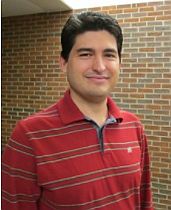 | Francisco Barrera, Ph.D., Biochemistry & Cellular and Molecular Biology
Cancer can be caused by a multitude of environmental and/or genetic factors that are often difficult to pinpoint, but that ultimately make it the second leading cause of death in the U.S. The tumor types that form during cancer have large physiological and biochemical differences, making detection and treatment difficult. However, there exists a unifying principle shared by most solid tumors in that their surrounding microenvironment is acidic. In my lab, students will design peptides that sense this acidic environment and undergo conformational changes that can be used to detect and potentially inhibit tumor formation. Students will learn and apply a host of biophysical, biochemical and cell biology techniques in their research. |
 | Eric Boder, Ph.D., Department of Chemical and Biomolecular Engineering
(http://cbe.utk.edu/people/eric-t-boder/) Treating diseases would be much more effective if, for example, a cancer therapeutic could be delivered directly to a tumor. In my lab, students will participate in an NIH-funded research effort to apply directed evolution techniques to re-engineer proteins as ‘smart’ materials for environmentally responsive and targeted delivery of therapeutic drugs, genes, or imaging agents. Students will learn techniques related to immunology, molecular biology, protein engineering, and biomaterials and apply them toward novel mechanisms for advanced disease management. |
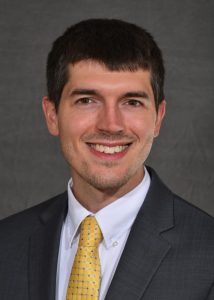 | Dustin Crouch, Ph.D., Mechanical, Aerospace, and Biomedical Engineering
Musculoskeletal disorders – a major healthcare burden in the US – can interfere with complex physiologic movement processes, leading to devastating impairment, deformity, and pain. Many of these disorders affect the upper limb, which may limit a person’s ability to perform tasks required for personal or professional activities. The goal of our research is to enhance the function of individuals with upper limb movement disability. We combine computational and experimental tools to better understand the effects of injury or disease on movement. With this knowledge, we develop assistive technologies, such as wearable exoskeletons or advanced control systems for prosthetic limbs, to restore function. |
 | Paul Dalhaimer, Ph.D., Department of Chemical and Biomolecular Engineering
(http://web.utk.edu/~pmdlab/DalhaimerLab/Welcome.html) Students will perform research that focuses on the effects of a high fat diet and ultimately obesity on the efficacy of circulating therapeutic nanoparticles. This will involve in vitro mammalian cell culture experiments where students will learn how to evaluate the uptake of nanoparticles in cells using sophisticated bioimaging approaches. |
 | Madhu Dhar, Ph.D., Department of Large Animal Clinical Sciences
(https://vetmed.tennessee.edu/FacultyStaff/SitePages/CVMProfile.aspx?NetID=mdhar) Students will obtain hands-on experience in the characterization of adult mesenchymal stem cells from goats, cows and/or horses to better understand mechanisms of tissue regeneration and repair. Students will learn molecular and cellular assays to identify signal transduction pathway(s) that a cell undergoes when it is triggered to differentiate into a bone, cartilage or a neural-like cell and apply this information toward human and veterinary medicine for improved clinical outcomes of disease states correlated to genetic and/or environmental factors. |
 | Elizabeth Fozo, Ph.D., Department of Microbiology
Students will conduct research addressing how two major bacterial pathogens are capable of persisting both in the environment and human host. Specifically, these students will use a combination of molecular biological and microbial techniques to address how Enterococcus faecalis and Escherichia coli O157:H7 respond to changing environments, including those conditions they will find within their human hosts, with an emphasis on the role of small RNAs and small proteins (under 50 amino acids in length). |
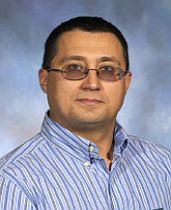 | Vitaly Ganusov, Ph.D., Department of Microbiology
(http://ganusovlab.utk.edu/default.htm) Undergraduate students will learn mathematical modeling and their application to experimental data. Students will use open source software such as R and/or python to program and simulate mathematical models and to analyze experimental data derived from the field of infectious disease dynamics and immunology. The students will learn how to fit mathematical models to experimental data and how to interpret results of mathematical modeling analysis, and learn the advantages and limitations of mathematical models in the interpretation of biological processes. |
 | Heidi Goodrich-Blair, Ph.D., Department of Microbiology
(http://micro.utk.edu/faculty/goodrich-blair.php) Students will use bacterial genetics, genomics, microscopy, and molecular and biochemical approaches to investigate the symbiotic interactions of the bacterium Xenorhabdus with its animal hosts. Xenorhabdus is a mutualist of Steinernema nematodes and a pathogen of a wide range of insects, and experimentation on this system will give students experiences in a broad range of skills in bacteriology, nematology, and entomology. Students will explore research questions that address evolutionary, ecological, and physiological principles underlying symbiotic associations. |
 | Qiang He, Ph.D., Civil and Environmental Engineering
(https://cee.utk.edu/people/qiang-he/) Students will conduct research on the microbial ecology of biofilms in drinking water distribution systems. Biofilms pose public health risks by impairing water quality integrity and serving as a reservoir of harmful microorganisms. Students will employ molecular techniques to identify microbial functional groups predominant and persistent in drinking water distribution systems and determine the biochemical functional features that enable biofilm development, which will be used to develop more effective water quality control strategies. |
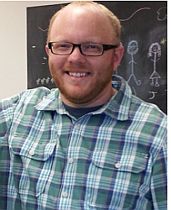 | Jeremiah Johnson, Ph.D., Department of Microbiology(https://sites.google.com/a/utk.edu/johnson-lab/home)
Undergraduates will use a combination of bacterial genetics and molecular biology to identify and characterize determinants of Campylobacter jejuni that are important for pre-harvest colonization of poultry and post-harvest survival during processing and storage of meat. The aim of this work is to gain insights into the factors required for transmission of C. jejuni to humans so that we can develop infection control strategies and/or compounds that reduce contamination of food and decrease human infection. Additionally, undergraduates will use an animal model of disease to investigate the outcome of C. jejuni infection in a mammalian host. In particular, we are interested in what the consequences of persistent C. jejuni colonization are on gut health and nutrient acquisition in young children in the developing world. |
 | Frank Loeffler, Ph.D., Department of Microbiology(http://web.utk.edu/~microlab/LoefflerLab/Home.html)
Undergraduate students will have opportunities to participate in research focused on the use of microorganisms to remediate chemical contaminants of environmental and human and animal health concern. Students will apply cultivation and cultivation-independent approaches to explore microbial community structure, function and response to contaminant perturbations, and use experimental and computational tools to explore genomes, transcriptomes, and proteomes of defined cultures and environmental communities that demonstrate efficient chemical detoxification for application toward reducing human/animal exposure events. |
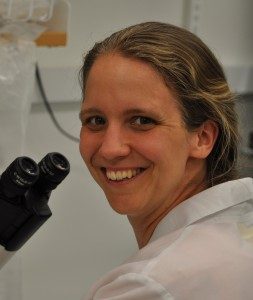 | Rachel Patton McCord, Ph.D., Biochemistry & Cellular and Molecular Biology(https://rpmlab.wordpress.com/)
Disruption of 3D human genome structure occurs in cancer, developmental disorders, premature aging disorders, and other diseases, but the fundamental principles and building blocks of genome structure remain uncharacterized. Students will apply such techniques as chromosome conformation capture (Hi-C), confocal microscopy, CRISPR targeted imaging, and genome wide profiling to better understand 3D human genome structure and its effect on normal development, homeostasis, and health. |
 | Larry Millet, Ph.D., The Center for Environmental Biotechnology (https://ceb.utk.edu/neurobiology-tissue-chips/) A growing list of chemical pollutants affect the neuroendocrine system. The hypothalamus is the key regulatory center of the neuroendocrine system and is susceptible to endocrine disruptors (e.g. organometallics, organohalides, pharmaceuticals, pesticides, industrial pollutants, and chemotherapeutics). The presence of these chemicals, even in trace amounts, may disrupt numerous chemical pathways that regulate growth, development, metabolism, reproduction, and environmental and physiological stress regulation. Undergraduate students will learn conventional and novel approaches to study the effects of chemical disruptors of, and candidate therapeutics on, the neuroendocrine system. Specifically, students will learn high throughput screening assays, bioimaging, cell culture, and the assembly and application of microphysiological microfluidic systems. |
 | Maria Prado, Ph.D., DVM, Department of Animal Sciences
(https://ag.tennessee.edu/AnimalScience/Pages/MariaPrado.aspx) Students will perform research in the development of biomonitors for the real-time surveillance of animal health and novel diagnostics for on-farm detection of environmental pathogens and their disease signatures. Students will merge molecular biology with biomedical engineering approaches to design, create, and validate diagnostic tools critical to the maintenance and support of animal health in agricultural production. |
 | Todd Reynolds, Ph.D., Department of Microbiology
(http://micro.utk.edu/faculty/reynolds.php) Candida albicans is among the most common causes of fungal infections in humans. Undergraduate students will assist in identifying the proteins targeted by small molecules that have antifungal activity or stimulate endocytic behavior in fungal cells to develop new antifungal drug targets. They will assist in genetic transformations of yeast and subsequent library screenings to identify genetic disruptions of genes throughout the genome for those that are resistant to drug compounds. |
 | Andy Sarles, Ph.D., Mechanical, Aerospace, and Biomedical Engineering
(https://biomat-laboratory.com/) Students will conduct research on the interactions between nanomaterials and biomimetic membranes to gain new understanding of how nanomaterials in the environment affect, disrupt, and potentially translocate biological cells. Students will learn experimental techniques to assemble and characterize model lipid membranes in the presence of synthetic nanomaterials. |
 | Tim Sparer, Ph.D., Department of Microbiology
(http://micro.utk.edu/faculty/sparer.php) Chemokines and their receptors normally function in inflammatory, developmental, and homeostatic processes. In my lab, students will study the role of cytomegalovirus’ chemokines in viral dissemination and pathogenesis. During the summer, they will gain experience in molecular virology, virology, immunology, and lead efforts to develop novel antiviral peptides that block cytomegalovirus and other viruses’ entry into cells. |
 | Jindong Tan, Ph.D., Mechanical, Aerospace, and Biomedical Engineering
(https://mabe.utk.edu/people/jindong-tan/) Research opportunities will be provided in the field of engineering robotics and wearable sensor systems. Best care practices for patients ideally requires systems capable of sensing, monitoring, and responding to both their internal and external environments. My lab creates such systems using robotics and students will participate in biomedical engineering research projects focused on the design, development, and testing of wearable sensors and minimally invasive surgical devices. |
 | Brynn Voy, Ph.D., Department of Animal Science
(https://ag.tennessee.edu/AnimalScience/Pages/BrynnVoy.aspx) More than one third of children in the U.S. are now overweight or obese, which increases their adult risk of both obesity and its co-morbidities (e.g., hypertension, Type 2 diabetes). Broiler chickens are especially attractive as a model organism for childhood obesity. Like pre-obese children, broiler chicks rapidly deposit fat prior to sexual maturation through a combination of adipocyte hypertrophy and hyperplasia. Current projects in our lab focus on fatty acid oxidation in white adipose tissue and how this pathway can be manipulated by diet, and on the balancing of adipose tissue lipid metabolism and adipogenesis during juvenile growth and development. Students will use a combination of transcriptomics, metabolomics, in vivo studies and classical cell biology to address these research areas.
|
 | Eric Wade, Ph.D., Mechanical, Aerospace, and Biomedical Engineering(http://web.utk.edu/~ewade5/)
Students will perform research in the fields of assistive robotics and wearable sensors to assist in the design and use of such biomedically-engineered systems outside of the typical clinical setting. This research will facilitate an improved understanding of how technology can be used to assist people with neurodegenerative disorders including stroke and Parkinson’s disease. |
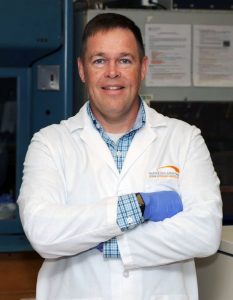 | Brian Whitlock, PhD, DVM, Large Animal Clinical Sciences, College of Veterinary Medicine (https://vetmed.tennessee.edu/about/faculty-staff/profiles/?id=421) The capacity to reproduce is a critical component to sustainable animal agriculture and species survivability. The long-term goal of our research is to determine the central mechanisms whereby the immune response controls reproduction in animals. The hypothalamus is the key regulatory center of the neuroendocrine system through which reproduction is controlled. Current projects in our lab focus on the effects of stressors applied to kisspeptin neurons in vitro, endotoxin-induced suppression of plasma luteinizing hormone and kisspeptin neurons in sheep and cattle, non-invasive spectroscopic quantification of depression biomarkers in sheep, and developing a model of traumatic brain injury in pigs to identify novel markers of neuroinflammation. Students will learn conventional and novel approaches to study the effects of disease-induced inflammation on neuroendocrine control of reproduction. |
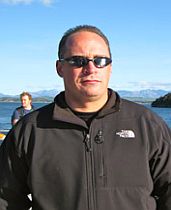 | Steven Wilhelm, Ph.D., Department of Microbiology
Students will have opportunities to conduct research in several areas including how viruses shape microbial communities, the interactions between viruses and prokaryotes influences biogeochemical cycles, and investigations into the root causes of toxic algal blooms. Students will employ molecular techniques. Students will help develop new approaches so that relationships can be extended to new model organisms from freshwater and marine systems. State-of-the-art molecular and bioinformatics tools are available to provide training tractable to any area of the biological and environmental sciences |
Skip to content
Skip to main navigation
Report an accessibility issue